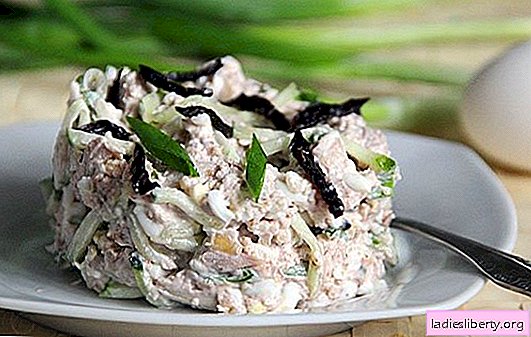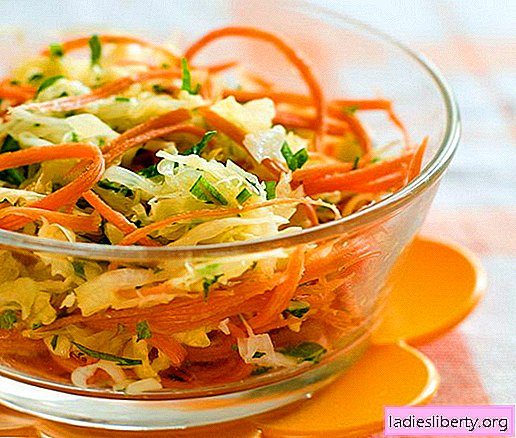
Now, if real ketchup, without preservatives, containing only healthy lycopene and pectin, juicy, with a variety of tastes, were sold in beautiful bottles and bright plastic packaging! But no. As always, you have to look for recipes for the sauce, to make it yourself to eliminate the content of sodium salts, artificial thickeners: after all, ketchup beat was invented in ancient China to improve the absorption of food, saturate the body with antioxidants, help it cope with the harmful excess cholesterol that comes with fried meat and fish. Well, let's not waste time in vain.
The basic technological principles of homemade ketchup
Love ketchup, but prefer to eat only natural products? With the onset of the "tomato season" try to prepare as much tomato puree as possible, homemade, without starch and other thickeners. This is the basis of modern ketchup, of course, if it is real.
Tomato puree or pasta is prepared very simply and at home: you just need to collect or buy ripe tomatoes, chop in any available way, wipe through a sieve, be patient, and slowly evaporate the liquid to the required density. It is advisable to evaporate the tomatoes in a sealed container to preserve maximum vitamins, but even if they are lost, mashed potatoes will still have many useful substances and organic compounds.
If you cannot achieve the desired consistency, add fresh applesauce: apples (especially the skin) have a lot of pectin, and these fruits are very harmoniously combined with tomatoes. No wonder tomatoes were also once called apples, and modern breeders from Switzerland even managed to cross these fruits! In addition, apples can themselves be the basis of piquant ketchup, and these fruits do an excellent job of improving digestion.
Berries and fruits can serve as the basis of homemade ketchup: the sweet and sour taste is unusually combined with different types of meat, and the biochemical composition of gooseberries, plums, cherry plums, currants, quinces, lingonberries and cranberries is no worse than a tomato set of vitamins. Only in berry puree for making ketchup for meat and other main dishes do not add too much sugar, or completely exclude it if there is enough fructose in the berries. Too sweet berry puree is useful only for dessert sauces.
To the base for ketchup, it remains to add your favorite spices and spices, preservatives that help to increase the shelf life of the product - salt, sugar, vinegar. What spices should I add? Note that these are natural and not chemical additives, as is the case with beautiful bottles in the store. Take an interest in the composition of your favorite ketchup, which is indicated on the product label. That's the idea for your favorite recipe! By the way, about containers for packaging home ketchup there are such suggestions:
If it’s not important to preserve ketchup in small and beautiful bottles and only in summer, then preserve tomatoes and applesauce without sugar: in winter, it is very easy to make classic ketchup from such preparations. In this embodiment, you will not need a lot of small dishes, which occupy an area in the pantry, and tomato puree can be preserved in larger containers with a volume of 0.5-1.0 liters.
At any time, from such a semi-finished product, you can prepare ketchup in five minutes. Moreover, in the case when long-term preservation and storage of the product is not required, you can expand the list of ingredients by adding products that are difficult to preserve at home: meat or fish broth, sour cream and other sour-milk products.
If you want to try Chinese sauce with anchovies, which became the founder of English ketchup, and later - the business idea of American producers, then tomatoes will not be needed in this case. There are many soy based ketchup recipes. Do not forget that ketchup is a variety of sauce, and this is the largest group of additions to different dishes in world culinary, consisting of a variety of products, since sauces are served not only with meat and fish, but also with vegetable dishes, pasta, sweet desserts . Sometimes sauces are so delicious that they are eaten simply with bread.
What else to add to what has been said? No matter how many recipes are written on the Internet, every housewife, following the exact amount of ingredients indicated in them, will still cook a completely new dish. If we talk about the recipe of any ketchup, then we must take into account that everyone has different tastes and focus on their own organoleptic characteristics. It is important to have an idea of the composition of the dish, the order of preparation, and the amount of ingredients is usually given in order to have a general idea of the consistency, the main taste, which should result from our own culinary interpretation.
Try to reproduce the tastes of the most popular recipes that are in great demand in the trading network, or prepare the sauce according to old, almost forgotten recipes.
1. Homemade ketchup - a simple classic from tomatoes
Ingredients:
Tomato puree (humidity not more than 50%) 90%
Clove
Sweet paprika
Chili or cayenne pepper
Coriander, black and Jamaican pepper, clove
Salt
Sugar
Vegetable oil, refined 10%
Table Vinegar 12%
Cooking:
Choose the required amount of sauce on your own, and to this value of the main component, tomato puree, add a tenth of the oil, and in the oil previously calcined in a pan, add all the ground spices in accordance with your taste. Pour the oil into boiling mashed potatoes, then simmer for several minutes: with a sauce volume of 1 liter, five minutes of stewing is enough. Add hot vinegar to the hot ketchup, and immediately pour into prepared containers. Dishes should be sterile, dry and hot. Work in a mitten mitten not to get burned.
When canning, never boil vinegar, otherwise it loses its properties: the alcohol contained in it instantly evaporates, and only acetic acid remains, and alcohol, just inhibits the development of harmful bacteria that spoil the conservation.
2. Homemade tomato ketchup with sweet pepper, garlic and onions
Ingredients:
Tomatoes, peppers, carrots and onions, onions - in one piece;
Oil - 20% of the total weight of vegetables;
Sugar and salt, garlic, as well as a mixture of ground peppers, bay leaf and coriander - to taste
Cooking method:
Wash tomatoes and peppers. Blanch tomatoes in boiling water to peel. Pound the peppers with a fork, put on a baking sheet and bake for about ten minutes in a well-heated oven. Then also peel off when cool, remove the stalks and seeds. Chop the carrots and onions, fry in oil until soft. Do not forget to add spices to the oil to enhance the aroma. You can fry onions and carrots separately, sprinkling them with a little sugar to absorb the juice of vegetables: as a result, such a syrup will give the sauce a caramel flavor.
Pour tomatoes and peppers with a blender and boil to half the volume. Add carrots and onions, punch the whole mass again with a blender, pass through a sieve to form a smooth, uniform consistency. Now put the sauce on the stove, add salt, sugar, bay leaf, garlic and other spices. Check for taste. Optionally, add spice, in the form of ground hot pepper. Remove the boiled bay leaves, and the boiling sauce, quickly spreading over the banks, twist the lids, wrap with something warm. When cool, clean in a cool place.
3. Homemade gooseberry, apple and ginger ketchup
Ingredients:
Gooseberries and apples - 1: 1
Ginger Root Fresh
Sugar
Mixture of peppers
Cilantro
Hot green pepper
Salt
Cooking:
Sort gooseberries and apples. Cut the apples into slices and, together with the gooseberries, pass through a meat grinder. Add sugar and salt, slowly mash, like jam. 5-10 minutes before the end of cooking, add cilantro and hot green pepper, crushed to a pasty state, and grated ginger. Cool the mass and wipe through a sieve to remove grains and the most prominent particles of mashed fruit. Add ground spices to mashed puree, taste. Boil the sauce again, no more than ten minutes, and pack in prepared jars.
If you decide not to add hot pepper to the ketchup, then, just in case, pasteurize the jars. Hot peppers contain capsaicin, which is a natural preservative, so the sharpest seasonings can be sterilized, but make sure that condensation does not form on the surface of jars - an excellent medium for the growth of mold fungi. Therefore, banks after pasteurization must be turned over and slowly cooled.
4. Homemade cherry ketchup for duck and pork
Ingredients:
Onion 1 part
Sugar
Cherry 2 parts
Cinnamon
Ginger
Salt
Nutmeg
Oil 15% of the total mass
Star anise
Garlic
Cooking:
Sort the cherries. To remove the moth, hold in acidic water, preparing a solution (20%). Remove the seeds, chop the cherries and boil to half the volume, adding ground ginger root, nutmeg, cinnamon and one or two "stars" of star anise. Fry the chopped onion until golden, sprinkled with sugar slightly, add chopped garlic to it to taste, a mixture of peppers. Transfer the onion into cherry puree, beat with a blender, carefully chopping the mass. Bring ketchup to a boil and put in jars.
5. Hungarian homemade ketchup
Ingredients:
Tomatoes 2 parts
Plums "Ugorka" 1 part
Bell pepper and onion - by? parts
Provencal herbs (mixture)
Garlic
Sugar
Red hot pepper (powder)
Thyme
Marjoram
Oil, olive - 10-15% of the mass
Acetic essence 1%
Operating procedure:
Grind the prepared ingredients to a pasty consistency using a blender or other kitchen appliances. Pour in mashed butter, add all the spices to taste, and cook until thick sour cream. Put the ready-made ketchup in jars and, twisting the lids, turn over and cover until cool.
6. Green home ketchup
Ingredients:
Spinach 2 pieces
Dill, cilantro, green basil and garlic - by? parts
Hot peppers, green -? total mass
Lemons - to taste (zest and juice)
Nuts, walnuts (kernels)
Salt
Ginger
Oil (mustard or sesame) 50% by weight
Cooking:
Wash and dry spinach and herbs. Remove the zest from the lemons and squeeze the juice. So that the sauce does not turn out to be too hot, you can remove the seeds along with the stalks. Grate finely. Dry the kernels in a hot oven and chop them with a knife or pass through a meat grinder. Combine all the ingredients, punch with a blender to give the sauce a uniform consistency like ketchup. Boil the ketchup. After boiling, cook no more than five minutes. If the mass turns out to be liquid, add chopped kernels of nuts. Transfer the hot sauce to the jars, turn them over, after cooling, clean in a dark place.
Homemade Ketchup - Useful Tips and Cooking Tricks
There is such a secret in Asian cuisine: freshly ground spices are thrown into hot oil, heated, and then the main ingredients are fried in this dizzying aroma, and the dish turns into a temptation that cannot be torn off.
The fact is that Asians, as representatives of an ancient culture, have long revealed the secrets of essential oils. Vegetable oil absorbs all odors very well, especially when heated. Essential oil, having a lighter molecular weight, quickly disappears, dispersing in the air. By combining any vegetable oil with a neutral taste and aroma, with spices, spicy roots and herbs, which contain essential oils, it is easy to obtain aromatic oil.
In pharmacology, this method of preparing aromatic oils has long been successfully used. Vegetable oil prepared in this way perfectly improves the taste of the dish, and for it, as the basis for essential oils, even a special term was coined - "transport oil". That is, the oil through which the aroma of pepper, coriander, ginger and other culinary additions passes through “transit” serves as a conductor of taste. Enveloping the meat with a thin film, vegetable oil transfers the product to the aroma of spices, which passed into it.
There is also a cold method of preparing aromatic oil, when dill, parsley, mint and other plant components with a pronounced aroma, which indicates the presence of essential (light, volatile) compounds, are placed in the purified vegetable oil. Such additives are crushed so that the extraction process is faster, then the oil is infused for a long time at room temperature, but without access to lighting, since light adversely affects the quality of transport oil, shortens its shelf life, sediment, turbidity and bitterness appear in the oil.
The transport property of vegetable oil is also successfully used in preserving vegetables, as it delays the aroma of added spices in sauce and other winter preparations. In addition, the oil film limits the access of oxygen to the tank, which prevents the development of pathogenic microorganisms.











